V. Interpret your own optometry sheet including degree and Pupillary distance
1. Representation of the degree of eyeglass: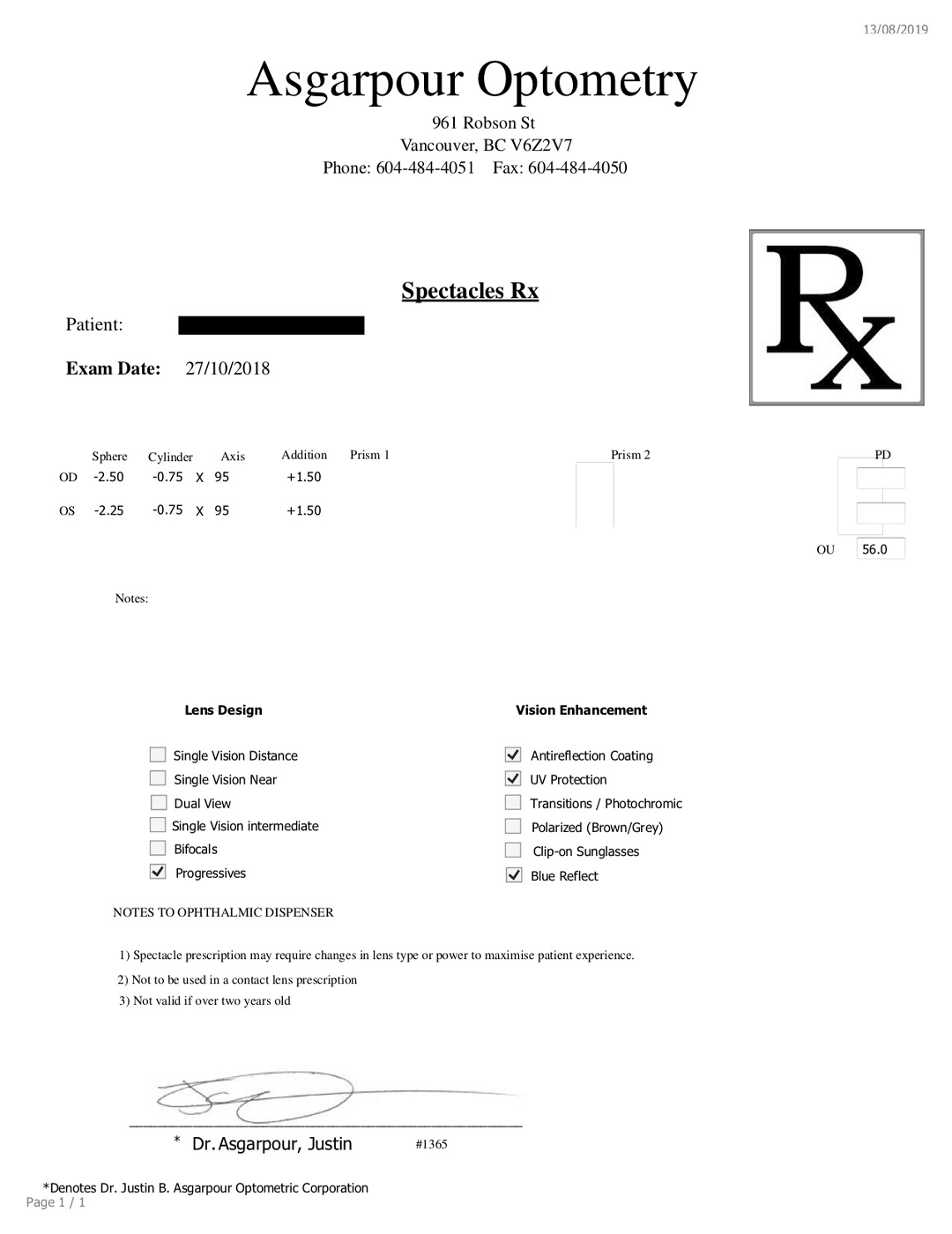
OD or RE or R:The right eye;
OS or LE or L:The left eye;
OU or BE:The eyes;
Add:The addition of luminosity, presbyopia, bifocals and progressive lenses;
S :Spherical lens, (-) for myopia and (+) for hyperopia or presbyopia;
C :Cylindrical lens, used for astigmatism;
DS :Focal power of the spherical lens;
DC :Focal power of the cylindrical lens;
AXIS:The axis of the cylinder lens. The astigmatism axis takes the angle between the cylinder axis and the horizontal line as the standard, and is currently marked by TABO labeling method, where the horizontal dimension is not called 0°, but 180°.
PD(Pupillary distance):The distance measured in millimeters between the centers of the pupils of the eyes;
PH (Pupil Height) : The height measured in millimeters of the pupil center on the lens.
Prism Degree Notation:
P:Prism unit of triple prism(△)
B:The direction of the prism base
BI:Basal inward (base near the nasal side)
BO:Basal outward (base near the temporal side)
BU:Basal upward
BD:Basal downward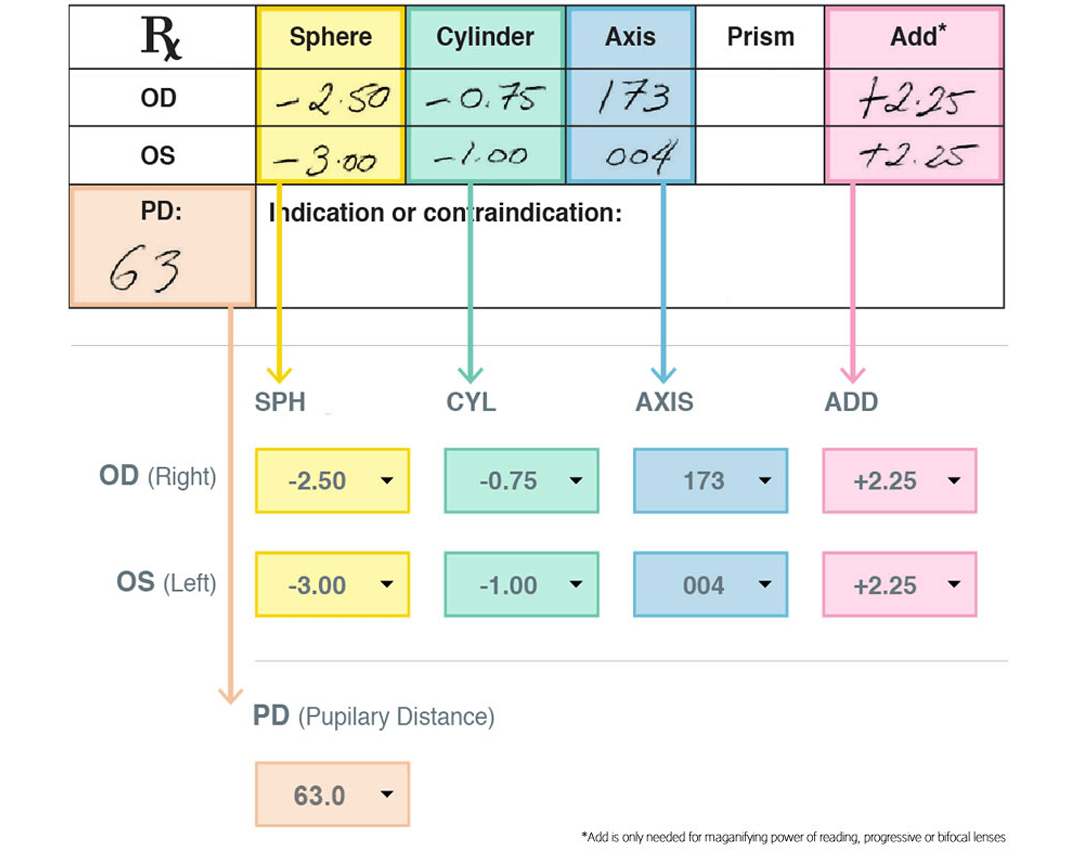
Examples of prescription for glasses:
R: -2.50DS/-0.75DC*173,
L: -3.00/ 1.00*4, PD: 63mm, ADD+2.25DS
The above prescription indicates that the right eye is 250 degrees myopia with -75 degrees astigmatism, and the astigmatism axis is at 173 degrees, while the left eye is 300 degrees myopia with -100 degrees astigmatism, and the astigmatism axis is at 4 degrees. The pupillary distance is 63 mm.ADD is marked on the optometry sheet, which means that the patient needs to wear the corresponding +225 degrees to correct the near-sightedness, that is, the degree of presbyopia is 225 degrees.
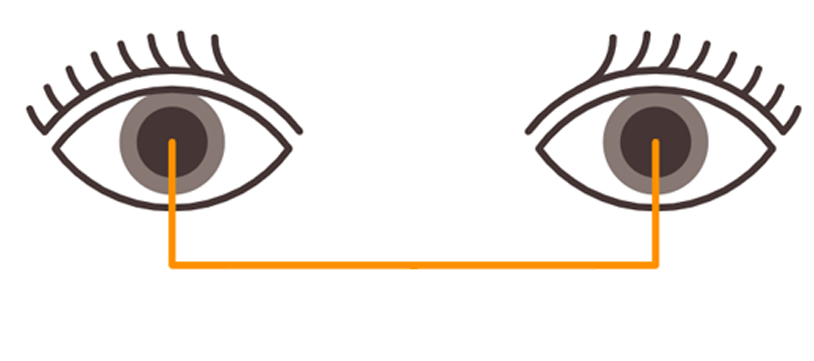
Measure your own PD
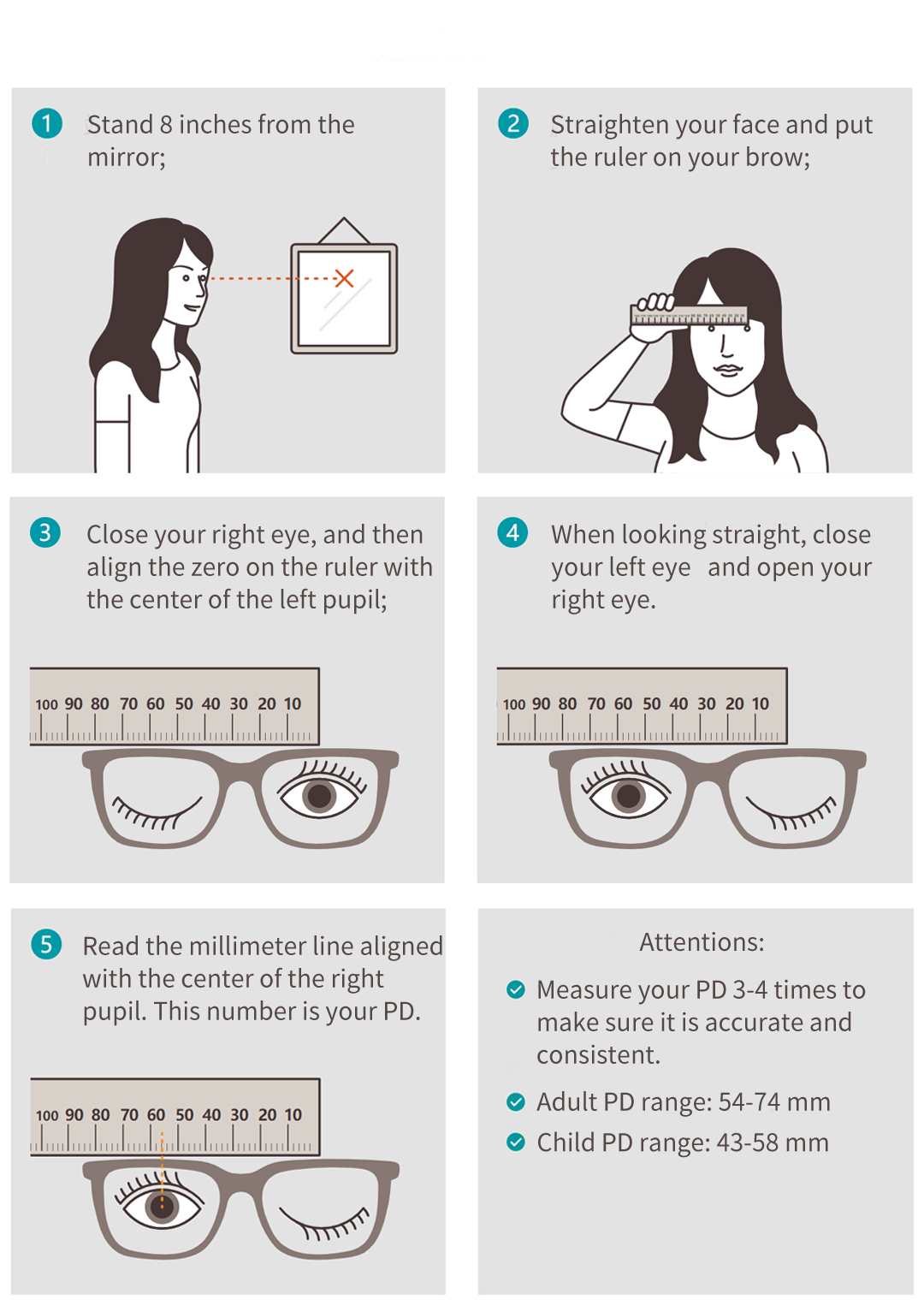
Classification of myopia degree:
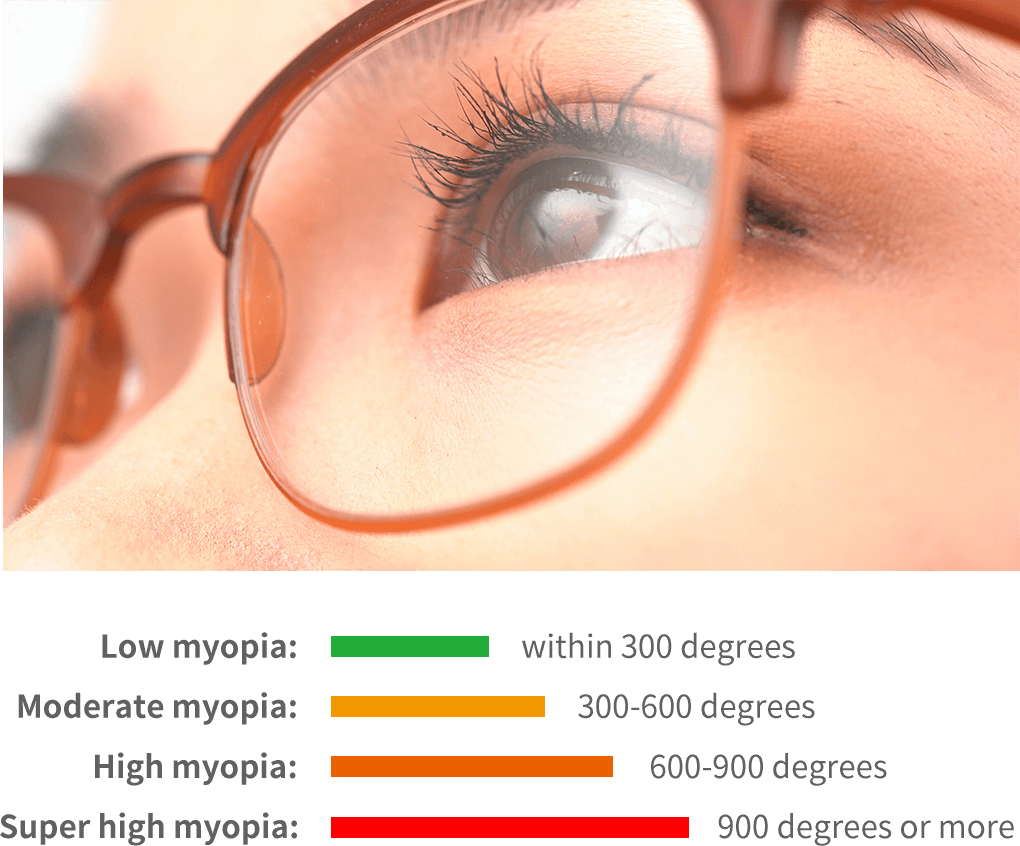
Choose the corresponding spectacle frame according to your own degree:

High/Super high myopia
Plate or metal frame is recommended. The higher the degree, the thicker the lens, so people with high myopia are not recommended to choose a large frame, which is unsightly l and heavy. It is recommended to choose a small frame. High myopia is affected by lens thickness. You can choose the full-rim frame to cover part of the thick lens and improve the overall appearance.At the same time, the frame should be a little heavier, and the nose pad should be able to hold it, to avoid the slide caused by the weight imbalance between the front and back of the frame. Also choose a frame with a large nose pad to increase the force area and reduce the indentation of the glasses. It is not recommended to use frames without nose pads as heavy lens can slip too easily.
2. Choose the right spectacle frame according to your pupillary distance

The pupillary distance is small,Since the lens needs to be processed by shifting the center, it is recommended to choose a wide frame with small lens ring to avoid insufficient shifting of the lens, which may cause a larger pupillary distance and uncomfortable wearing.
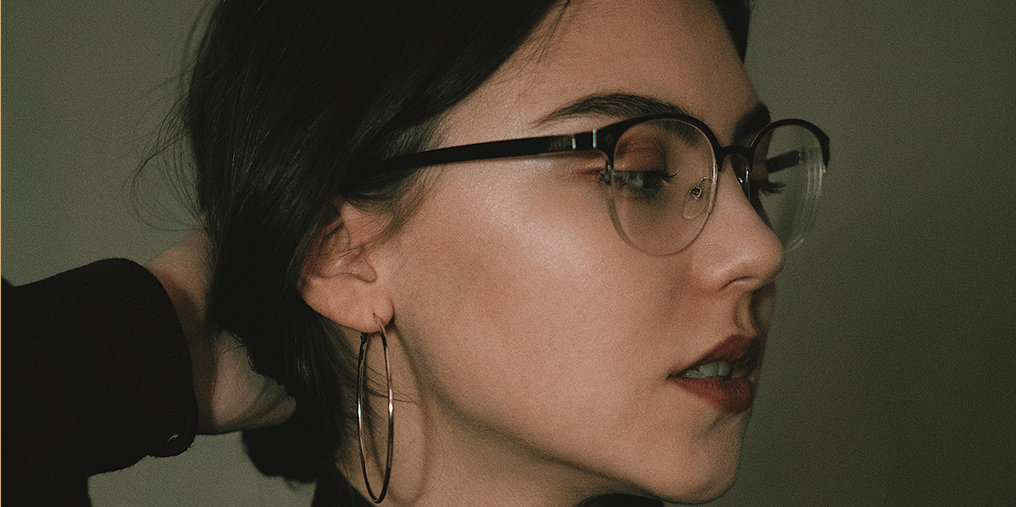
The distance between the eyes is small,You can use the frame that is light-colored at the bridge of the nose and gradually darkens toward the glass leg. The reverse is true for wide eye distance.




















